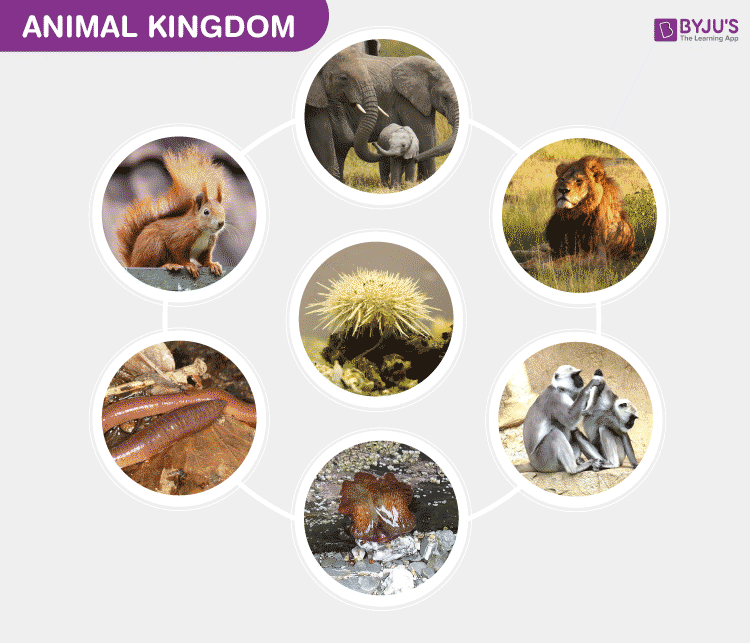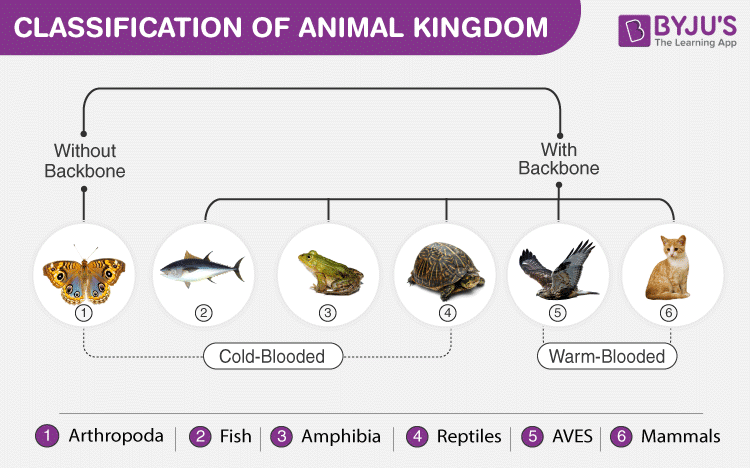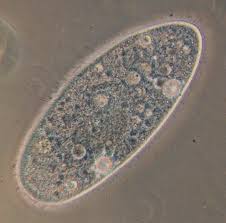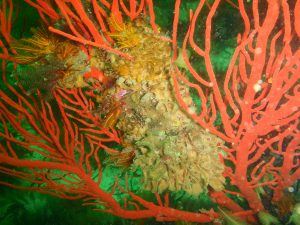
Animals are eukaryotic, multicellular, species belonging to the Kingdom Animalia. Every animal has its own unique characteristics. They obtain their energy either by feeding on plants or on other animals. There are millions of species which have been identified, few share similar characteristics while others differ drastically.
Also Read: Lower Invertebrates
Classification of Animal Kingdom

Animals are classified based on their characteristics. They are eminent from algae, plants, and fungus where rigid cell walls are absent. Some are also heterotrophic, in general, they digest their food within the internal chambers which again distinguish them from algae and plants. Another elite character of these species is that they are motile, except in certain life stages.
Protozoa

Protozoa are the different group of eukaryotic organisms which are unicellular having some similar characteristics of animals such as motility and predation. Protozoa take in food by the process of osmotrophy that is by engrossing the nutrients through the cell membranes or also they feed on phagocytosis, either by the process of engulfing the particles of the food with the help of pseudopodia.
Bryozoans

Bryozoans are normally acknowledged as moss animals. They are filter feeders which sift food particles out of the water using a crown of tentacles lined with cilia and most of them dwell in humid waters, few in glacial waters and some in marine trenches. Most of them are colonial and one genre is solitary. Zooids are individuals in bryozoans and they are not completely independent species. All colonies have auto zooids, which are accountable for feeding and excretion.
Vertebrates

Vertebrates are the animals possessing backbones. Some include jawed vertebrates and jawless fish. For example sharks, ray fish, and bony fish. A bony fish named clad also further falls into the class of amphibians, reptiles, mammals, and birds. Extant vertebrates vary in size beginning from the frog species named Paedophryne amanuensis to the blue whale. Amphibians are species that live in the land and move to water for breeding. Reptiles are covered by scutes. Mammals are terrestrial, aquatic or aerial. Birds are covered with feathers and have streamlined avenues.
- Organ Level of Organization: Animal tissues comprising of similar capacity are classified into shaped organs. Every organ is definite for particular capacity. For example Platyhelminthes.
- Tissue Level of Organization: Animal cells displaying division of exercises among themselves.Cells performing the same function cooperate to form tissues.
- Organ framework Level of Organization: The organ framework level of organization are displayed in those organisms where organs define the shape of functional frameworks and each framework is with a distinct physiological capacity.
- Cellular Level of Organization: This organization consists of animals with cells which are formed as free cell lumps.
Recommended Video:

Organ Systems Patterns
Circulatory System: They are 2 types of the Circulatory framework – open type and closed type.
- Open Type: In this type of circulatory system the blood is pumped out of the heart. For example Mollusca and Arthropods.
- Closed Type: In this type of circulatory system the blood flows through a progression of vessels that is capillaries, arteries, and veins.
Digestive System: There are 2 types of digestive system. Complete and Incomplete digestive systems.
- Complete Digestive System: In this type of digestive system there are 2 openings to the outside of the body, a rear-end and a mouth. For instance: Chordates and Arthropods.
- Incomplete Digestive System: It consists of only one open to the outside of the body a solitary opening which serves as both rear-end and mouth. For example Platyhelminthes.
Body Symmetry: There are 3 types of symmetry. Bilateral, Radial, and Asymmetrical.
- Bilateral Symmetry: Animals, where a body can be partitioned into indistinguishable left and right parts, are known to be bilaterally symmetrical.
- Radial Symmetry: Animals tend to display spiral symmetry. For example Coelenterates, Echinoderms, and Ctenophores.
- Asymmetrical: Asymmetry is the finished nonappearance of symmetry. That is a few animals cannot be divided into two equivalent parts along with any plane going through the focal point of the organism. For example Sponges.
Also Read: Kingdom Plantae, Animalia, Viruses
Stay tuned with BYJU’S to learn more about the Animal Kingdom and its classification.

it is good
Thank you for the Information
It is fabulous
Thank u for this information, this is outstanding!!!
It’s a very important and easy explanation of chapter 4 of NCERT
Thanks
Thanks 🥰